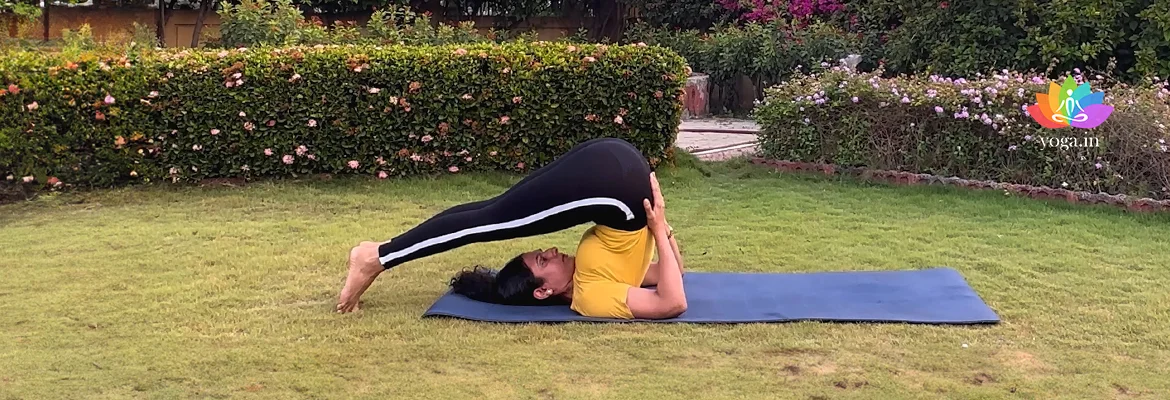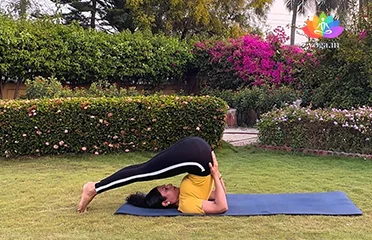Lie down on the surface of the floor in the supine position. Keep your arms beside the body and put your palms facing down.
Introduction to the Asana
The Sanskrit name is derived from Hala (हला) meaning plough and asana (आसन) meaning posture or seat.
Step to get in the pose
-
-
As you inhale, use your abdominal muscles to lift your feet off the floor, raising your legs vertically at a 90-degree angle.
-
Continue to breathe normally and support your hips and back with your hands, lifting them off the ground.
-
Allow your legs to sweep at a 180-degree angle over your head till your toes touch the floor.
-
Your back should be perpendicular to the floor.
-
Hold this pose and let your body relax more and more with each steady breath.
-
After a few seconds of resting in this pose, you may gently bring your legs down on exhalation.
Common mistakes and pitfalls
-
Holding inversions for too long.
-
Placing too much weight on the spinal column can strain your neck.
-
Not holding the core muscle tightly.
Benefits
-
Strengthens and tones the spinal cord and the back muscles.
-
Highly therapeutic when suffering from headache, backache, insomnia and sinusitis.
-
Boosts blood circulation and the immune system.
-
Helps manage diabetes.
-
Helps to boost the functioning of thyroid, parathyroid, pituitary and adrenal glands.
-
Aids to cure asthma and bronchitis.
-
Helps to improve the digestive system & get rid of constipation.
-
Helps to reduce stress and fatigue.
-
Reduce belly fat.
-
Helps women deal with menopause symptoms.
-
Helps in calming the brain and relieves stress.
-
Healthy growth of hair.
Contraindication
-
Avoid in case of any injured cervical or hamstring muscles.
-
Avoid in case of weak legs and weak hamstring muscles.
-
Avoid in case of sciatica, slipped disc, or cervical Spondylitis.
-
Avoid in case of abdominal injuries or hernia.
-
Avoid if suffering from an enlarged thyroid, spleen, or liver.
-
Avoid if suffering from blood pressure, or frequent headaches.
-
Avoid during pregnancy and menstruation.
-
Avoid in case of sinus, ear or eye issues.




